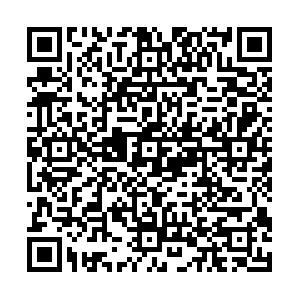Association between negative life events and smartphone addiction among middle school students
-
摘要:
目的 探究负性生活事件与中学生智能手机成瘾之间的关联,为中学生智能手机成瘾的预防和干预提供理论支持和实践指导。 方法 采用整群抽样方法,于2022年对深圳市某区27所初中和3所高中8 890名中学生开展基线调查,2023年对以上对象开展随访研究,通过自编一般情况调查表、智能手机依赖量表简版、青少年自评生活事件量表调查中学生基本信息、智能手机成瘾、负性生活事件情况。采用混合效应模型分析中学生负性生活事件与智能手机成瘾的关联。 结果 与2022年相比,2023年中学生受惩罚评分[1.00(0.00, 6.00), 1.00(0.00, 6.00)]降低(Z=4.27),而人际压力、学习压力和适应评分[4.00(0.00, 8.00), 4.00(0.00, 8.00); 4.00(1.00, 8.00), 5.00(2.00, 9.00); 2.00(0.00, 6.00), 3.00(0.00, 7.00)]升高(Z值分别为-3.04,-8.36,-6.80)(P值均 < 0.01)。混合效应模型显示,中学生负性生活事件与智能手机成瘾呈正向剂量效应关系(OR=1.08~1.17,P < 0.01)。逐步回归分析表明,人际压力(OR=1.05)、学习压力(OR=1.03)和适应(OR=1.11)对中学生智能手机成瘾有独立正向影响(P值均 < 0.01)。对2022年无成瘾的中学生进行亚组分析,学习压力(OR=1.03)和适应(OR=1.07)与智能手机成瘾的关联仍有统计学意义(P值均 < 0.01)。 结论 负性生活事件与中学生智能手机成瘾呈正向剂量反应关系,尤其是人际压力、学习压力、适应方面的负性生活事件。 Abstract:Objective To explore the association between negative life events and smartphone addiction among middle school students, so as to provide theoretical support and practical guidance for prevention and intervention of smartphone addiction among middle school students. Methods Using cluster sampling, 8 890 students were selected to survey from 27 junior high schools and 3 senior high schools in a district of Shenzhen in 2022 (baseline) and 2023 (follow-up). Data were collected through self-resigned questionnaires on basic information, the Smartphone Addiction Scale-Short Version, and the Adolescent Self-rating Life Events Checklist. Mixed-effects models were employed to analyze the association. Results Compared to 2022, the punishment scores of middle school students in 2023 [1.00(0.00, 6.00) and 1.00(0.00, 6.00)] decreased (Z=4.27), while the scores of interpersonal stress, learning stress and adaptation [4.00(0.00, 8.00), 4.00(0.00, 8.00); 4.00(1.00, 8.00), 5.00(2.00, 9.00); 2.00(0.00, 6.00), 3.00(0.00, 7.00)] increased (Z=-3.04, -8.36, -6.80) (P < 0.01). Mixed-effects models revealed a positive dose-response relationship between negative life events and smartphone addiction (OR=1.08-1.17, P < 0.01). Stepwise regression showed independent positive effects of interpersonal stress (OR=1.05), academic stress (OR=1.03), and adaptation stress (OR=1.11) on smartphone addiction (P < 0.01). Subgroup analysis of non-addicted students in 2022 confirmed persistent associations for academic stress (OR=1.03) and adaptation (OR=1.07) (P < 0.01). Conclusion Negative life events exhibit a positive dose-response relationship with smartphone addiction, particularly interpersonal stress, academic stress, and adaptation-related events. -
Key words:
- Life change events /
- Cellular phone /
- Behavior, addictive /
- Regression analysis /
- Students
1) 利益冲突声明 所有作者声明无利益冲突。 -
表 1 不同人口统计学特征中学生智能手机成瘾检出率的年份间比较
Table 1. Comparison of smartphone addiction prevalence among middle school students with different demographic characteristics over two years
人口学指标 人数 2022年 2023年 χ2值 P值 性别 男 4 774 1 065(22.3) 1 088(22.8) 0.29 0.59 女 4 116 1 086(26.4) 1 151(28.0) 2.51 0.11 学段 初中 7 219 1 602(22.2) 1 688(23.4) 2.84 0.09 高中 1 671 549(32.9) 551(33.0) 0.00 0.97 学校类型 公办学校 6 419 1 392(21.7) 1 480(23.1) 3.39 0.07 民办学校 2 471 759(30.7) 759(30.7) 0.00 1.00 父亲文化程度 初中及以下 2 933 817(27.9) 791(27.0) 0.54 0.46 高中或中专 3 119 761(24.4) 800(25.6) 1.23 0.27 大专及以上 2 838 573(20.2) 648(22.8) 5.71 0.02 母亲文化程度 初中及以下 3 404 917(26.9) 879(25.8) 1.04 0.31 高中或中专 2 745 663(24.2) 718(26.2) 2.82 0.09 大专及以上 2 741 571(20.8) 642(23.4) 5.19 0.02 是否独生子女 是 1 490 320(21.5) 337(22.6) 0.50 0.48 否 7 400 1 831(24.7) 1 902(25.7) 1.76 0.19 是否担任班级干部 是 4 548 980(21.5) 1 057(23.2) 3.65 0.06 否 4 342 1 171(27.0) 1 182(27.2) 0.06 0.81 住宿情况 走读生 6 350 1 396(22.0) 1 496(23.6) 4.39 0.04 住宿生 2 540 755(29.7) 743(29.3) 0.11 0.74 注: ()内数字为检出率/%。 表 2 不同年份中学生负性生活事件评分比较[M(P25, P75), n=8 890]
Table 2. Comparison of negative life event impact scores and smartphone addiction among middle school students over two years[M(P25, P75), n=8 890]
年份 受惩罚 丧失 人际压力 学习压力 适应 2022 1.00(0.00, 6.00) 1.00(0.00, 5.00) 4.00(0.00, 8.00) 4.00(1.00, 8.00) 2.00(0.00, 6.00) 2023 1.00(0.00, 6.00) 1.00(0.00, 6.00) 4.00(0.00, 8.00) 5.00(2.00, 9.00) 3.00(0.00, 7.00) Z值 4.27 -1.09 -3.04 -8.36 -6.80 P值 < 0.01 0.27 < 0.01 < 0.01 < 0.01 表 3 中学生负性生活事件影响程度评分与智能手机成瘾关联的混合效应模型[OR值(95%CI),n=8 890]
Table 3. Mixed-effects model analysis of the association between negative life event impact scores and smartphone addiction among middle school students[OR(95%CI), n=8 890]
负性生活事件 粗模型 调整模型 似然比检验χ2值 受惩罚 1.08(1.08~1.09) 1.08(1.07~1.09) 224.26 丧失 1.09(1.08~1.10) 1.09(1.08~1.09) 198.23 人际压力 1.15(1.14~1.15) 1.14(1.13~1.15) 161.98 学习压力 1.14(1.13~1.14) 1.13(1.13~1.14) 156.98 适应 1.18(1.17~1.19) 1.17(1.16~1.18) 120.77 注: P值均 < 0.01。 -
[1] 钱冬明, 夏彧, 李玉顺, 等. 手机!手机![N]. 中国青年报, 2021-04-26(08).QIAN D M, XIA Y, LI Y S, et al. Mobile phone!Mobile phone![N]. China Youth Daily, 2021-04-26(08). (in Chinese) [2] 刘勤学, 杨燕, 林悦, 等. 智能手机成瘾: 概念、测量及影响因素[J]. 中国临床心理学杂志, 2017, 25(1): 82-87.LIU Q X, YANG Y, LIN Y, et al. Smartphone addiction: concepts, measurements, and factors[J]. Chin J Clin Psychol, 2017, 25(1): 82-87. (in Chinese) [3] LU X, AN X, CHEN S. Trends and influencing factors in problematic smartphone use prevalence (2012-2022): a systematic review and Meta-analysis[J]. Cyberpsychol Behav Soc Netw, 2024, 27(9): 616-634. doi: 10.1089/cyber.2023.0548 [4] OLSON J A, SANDRA D A, COLUCCIÉ S, et al. Smartphone addiction is increasing across the world: a Meta-analysis of 24 countries[J]. Comput Human Behav, 2022, 129: 107138. doi: 10.1016/j.chb.2021.107138 [5] 周楠, 王少凡, 朱曦淳, 等. 中国儿童青少年手机使用与手机成瘾行为及相关因素分析[J]. 中国学校卫生, 2022, 43(8): 1179-1184. doi: 10.16835/j.cnki.1000-9817.2022.08.014ZHOU N, WANG S F, ZHU X C, et al. Cellphone usage and addiction among Chinese children and adolescents and related factors[J]. Chin J Sch Health, 2022, 43(8): 1179-1184. (in Chinese) doi: 10.16835/j.cnki.1000-9817.2022.08.014 [6] TAI Z, CHEN H, LI Y. Problematic smartphone use among middle school and high school students in China: a cross-sectional survey study[J]. Int J Ment Health Addict, 2024: 1-16. [7] 郑秀秀, 闫风武, 周芸芸, 等. 青少年手机成瘾流行病学及健康危害的研究进展[J]. 中国儿童保健杂志, 2022, 30(5): 526-530.ZHENG X X, YAN F W, ZHOU Y Y, et al. Research progress in the concept, epidemiology and health hazards of smart phone addiction on adolescents[J]. Chin J Child Health Care, 2022, 30(5): 526-530. (in Chinese) [8] 徐楚楚, 解瑾, 卫心雨, 等. 青少年手机成瘾干预研究进展[J]. 中国学校卫生, 2022, 43(8): 1276-1280. doi: 10.16835/j.cnki.1000-9817.2022.08.035XU C C, XIE J, WEI X Y, et al. Research progress of smartphone addiction interventions in adolescents[J]. Chin J Sch Health, 2022, 43(8): 1276-1280. (in Chinese) doi: 10.16835/j.cnki.1000-9817.2022.08.035 [9] LANG D, CONE N, JONES T, et al. Physical development in adolescence[M]//LANG D. Individual and family development, health, and well-being. Iowa: Iowa State University Digital Press, 2022. [10] 赵雷, 陈红敏. 当代大学生负性生活事件的调查与分析[J]. 中国青年政治学院学报, 2010, 29(2): 22-26. doi: 10.3969/j.issn.1002-8919.2010.02.005ZHAO L, CHEN H M. Investigation and analysis of negative life events among contemporary college students[J]. J Chin Youth Soc Sci, 2010, 29(2): 22-26. (in Chinese) doi: 10.3969/j.issn.1002-8919.2010.02.005 [11] 张锐. 高中生手机依赖的影响因素及其团体心理干预研究[D]. 太原: 山西医科大学, 2017.ZHANG R. A study of related factors of mobile phone dependence in high school students and the group psychological intervention. Taiyuan: Shanxi Medical University, 2017. (in Chinese) [12] 陈靖敏. 中学生生活事件、反刍思维、同伴依恋及手机成瘾的关系及干预研究[D]. 武汉: 华中师范大学, 2019.CHEN J M. Research on the relationship and intervention of life events, ruminant thinking, peer attachment and mobile phone addiction. Wuhan: Central China Normal University, 2019. (in Chinese) [13] 万娇娇. 青少年生活事件、手机依赖、情绪智力、学业倦怠的关系研究[D]. 信阳: 信阳师范学院, 2020.WAN J J. Research on the relationship among the life events, mobile phone dependence, emotional intelligence and academic burnout of adolescents[D]. Xinyang: Xinyang Normal University, 2020. (in Chinese) [14] 王星. 高中生手机依赖的发展轨迹及其与心理痛苦和负性生活事件的关系[D]. 重庆: 西南大学, 2021.WANG X. The development trajectory of high school students' mobile phone dependence and the association among mobile phone dependence, psychological distress and negative life events[D]. Chongqing: Southwest University, 2021. (in Chinese) [15] 钟力平. 斯金纳的强化理论及其应用[J]. 企业改革与管理, 2008(2): 70-71.ZHONG L P. Skinner's reinforcement theory and its applications[J]. Enterp Reform Manage, 2008(2): 70-71. (in Chinese) [16] XIE J Q, ZIMMERMAN M A, ROST D H, et al. Stressful life events and problematic smartphone usage among Chinese boarding-school adolescents: a moderated mediation model of peer support and depressive symptoms[J]. Addict Res Theory, 2020, 28(6): 493-500. doi: 10.1080/16066359.2019.1692824 [17] KWON M, KIM D J, CHO H, et al. The Smartphone Addiction Scale: development and validation of a short version for adolescents[J]. PLoS One, 2013, 8(12): e83558. doi: 10.1371/journal.pone.0083558 [18] 项明强, 王梓蓉, 马奔. 智能手机依赖量表中文版在青少年中的信效度检验[J]. 中国临床心理学杂志, 2019, 27(5): 959-964.XIANG M Q, WANG Z R, MA B. Reliability and validity of Chinese Version of the Smartphone Addiction Scale in adolescents[J]. Chin J Clin Psychol, 2019, 27(5): 959-964. (in Chinese) [19] 刘贤臣, 刘连启, 杨杰, 等. 青少年生活事件量表的信度效度检验[J]. 中国临床心理学杂志, 1997, 5(1): 39-41.LIU X C, LIU L Q, YANG J, et al. Reliability and validity test of the Adolescent Self-rating Life Events Checklist[J]. Chin J Clin Psychol, 1997, 5(1): 39-41. (in Chinese) [20] 辛秀红, 姚树桥. 青少年生活事件量表效度与信度的再评价及常模更新[J]. 中国心理卫生杂志, 2015, 29(5): 355-360. doi: 10.3969/j.issn.1000-6729.2015.05.010XIN X H, YAO S Q. Validity and reliability of the Adolescent Self-rating Life Events Checklist in middle school students[J]. Chin Ment Health J, 2015, 29(5): 355-360. (in Chinese) doi: 10.3969/j.issn.1000-6729.2015.05.010 [21] 陶文君. 中学生负性生活事件与利他行为的关系: 共情的中介作用[D]. 芜湖: 安徽师范大学, 2020.TAO W J. Relationship between negative life events and altruistic behavior in middle school students: the mediating role of empathy[D]. Wuhu: Anhui Normal University, 2020. (in Chinese) [22] 黄强强. 中学生负性生活事件对非自杀性自伤行为的影响: 领悟社会支持的中介作用[D]. 呼和浩特: 内蒙古师范大学, 2022.HUANG Q Q. The influence of negative life events on non-suicidal self-injurious behavior in middle school students: perceived social support scale[D]. Hohhot: Inner Mongolia Normal University, 2022. (in Chinese) [23] WANG W, LIU J, LIU Y, et al. Peer relationship and adolescents' smartphone addiction: the mediating role of alienation and the moderating role of sex[J]. Curr Psychol, 2023, 42(26): 22976-22988. doi: 10.1007/s12144-022-03309-2 [24] WANG J L, ROST D H, QIAO R J, et al. Academic stress and smartphone dependence among Chinese adolescents: a moderated mediation model[J]. Child Youth Serv Rev, 2020, 118: 105029. doi: 10.1016/j.childyouth.2020.105029 [25] ZHANG Y, HAN M, LIAN S, et al. How and when is academic stress associated with mobile phone addiction?The roles of psychological distress, peer alienation and rumination[J]. PLoS One, 2024, 19(2): e0293094. doi: 10.1371/journal.pone.0293094 [26] CHEN C, ZHANG K Z K, GONG X, et al. Dual mechanisms of reinforcement reward and habit in driving smartphone addiction[J]. Int Res, 2019, 29(6): 1551-1570. [27] KARDEFELT-WINTHER D. A conceptual and methodological critique of Internet addiction research: towards a model of compensatory Internet use[J]. Comput Human Behav, 2014, 31: 351-354. doi: 10.1016/j.chb.2013.10.059 [28] KIM J H. Smartphone-mediated communication vs. face-to-face interaction: two routes to social support and problematic use of smartphone[J]. Comput Human Behav, 2017, 67: 282-291. doi: 10.1016/j.chb.2016.11.004 [29] 何安明, 冯文靖. 中学生希望与智能手机成瘾关系的纵向追踪调查[J]. 信阳师范学院学报(哲学社会科学版), 2022, 42(2): 69-73, 80.HE A M, FENG W J. Longitudinal tracking investigation of the relationship between hope and smartphone addiction among middle school students: exploring its cause and effect[J]. J Xinyang Norm Univ (Philos Soc Sci Edit), 2022, 42(2): 69-73, 80. (in Chinese) [30] 吴荣, 任鹏宇, 马臣萃, 等. 贵州省初中生手机依赖症与学业负担的关系[J]. 中国学校卫生, 2023, 44(4): 558-562, 566. doi: 10.16835/j.cnki.1000-9817.2023.04.019WU R, REN P Y, MA C C, et al. The relationship between mobile phone dependence and academic burden among junior middle school students in Guizhou Province[J]. Chin J Sch Health, 2023, 44(4): 558-562, 566. (in Chinese) doi: 10.16835/j.cnki.1000-9817.2023.04.019 [31] 石利娟, 周子微, 刘旭. 智能手机成瘾高风险青少年的类别特征及风险因素[J]. 当代教育理论与实践, 2024, 16(4): 14-20.SHI L J, ZHOU Z W, LIU X. Categorical characteristics and risk factors of adolescents at high risk for smartphone addiction[J]. Theory Pract Contemp Educ, 2024, 16(4): 14-20. (in Chinese) [32] CHOE C, YU S. The reciprocal relationship between mobile phone dependence and school adaptation in Korean adolescents: autoregressive cross-lagged modeling[J]. Acta Psychol (Amst), 2022, 228: 103628. doi: 10.1016/j.actpsy.2022.103628 [33] CAO M, YANG H, CHEN D. Relationship between anxiety and problematic smartphone use in first-year junior high school students: moderated mediation effects of physical activity and school adjustment[J]. Behav Sci, 2023, 13(11): 901. doi: 10.3390/bs13110901 -

 点击查看大图
点击查看大图
计量
- 文章访问数: 236
- HTML全文浏览量: 110
- PDF下载量: 49
- 被引次数: 0





 下载:
下载: